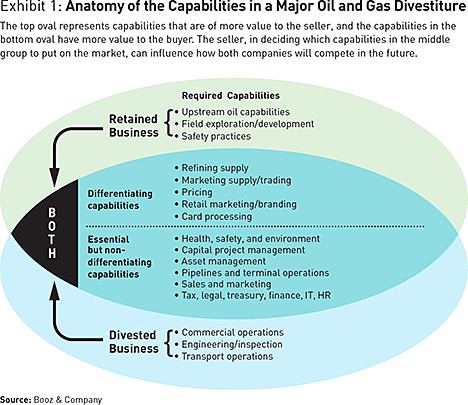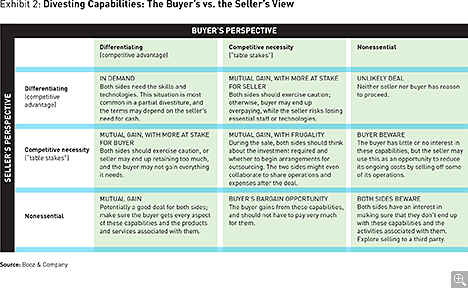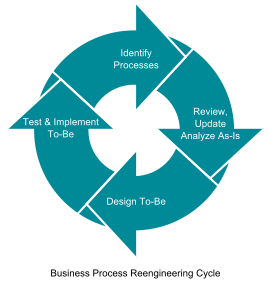 |
| Logo of the United States Bureau of Economic Analysis, a part of the Department of Commerce. (Photo credit: Wikipedia) |
On July 31, 2013, the
US Bureau of Economic Analysis released, for the first time,
GDP figures categorizing research and development as fixed investment. It will join software in a new category called intellectual-property products.
In our knowledge-based economy, this is a sensible move that brings GDP accounting closer to economic reality. And while that may seem like an arcane shift relevant only to a small number of economists, the need for the change reflects a broader mismatch between our digital economy and the way we account for it. This problem has serious top-management implications.
To understand the mismatch, you need to understand what we call digital capital—the resources behind the processes key to developing new products and services for the digital economy. Digital capital takes two forms. The first is traditionally counted tangible assets, such as servers, routers, online-purchasing platforms, and basic Internet software. They appear as capital investment on company books. Yet a large and growing portion of what’s powering today’s digital economy consists of a second type of digital capital—
intangible assets.
They are manifold: the unique designs that engage large numbers of users and improve their digital experiences; the digital capture of user behavior, contributions, and social profiles; the environments that encourage consumers to access products and services; and the intense big-data and analytics capabilities that can guide operations and business growth. They also include a growing range of new business models for monetizing digital activity, such as patents and processes that can be licensed for royalty income, and the brand equity that companies like Google or Amazon.com create through digital engagement.
Conventional accounting treats these capabilities not as company investments but as expenses, which means that their funding isn’t reflected as capital. Since the amounts spent aren’t amortized, they take a large bite out of reported income. Spending on those capabilities sometimes should be treated as capital, though, since they can be long-lived. Amazon.com’s development of an internal search process that promotes recurring sales or the efforts of Netflix to fine-tune personal recommendations to increase video viewing and retain customers are certainly more than expenses. Such capabilities, which are complex to build and replicate, can often help companies create enduring competitive strengths.
We’re acutely aware of misguided efforts to justify sky-high valuations during the late-1990s Internet bubble by claiming that finance and accounting fundamentals were no longer relevant. We also recognize that we’re far from the first to note the relationship among intangibles, company-level growth and productivity, and overall economic growth. What we want to suggest here is that those relationships, which once represented a small minority of business activities, are becoming the rule in the digital economy. In fact, much of today’s digital spending could pay for long-lived intangible assets that will define the competitive landscape going forward. The rising stakes are seen in the copyright battles between Internet and consumer-electronics companies and in major spending on patent portfolios.
Above all, we want to emphasize the importance, for many business leaders, of making the mind-set shift required to embrace the importance of digital capital fully. The disruptive nature of digital assets is intensifying in markets such as search, e-commerce, and social media (where attackers can build business models with near-limitless scale). Disruptive digital assets are also important in segments where behavioral data and user participation can be monetized, by defining entirely new business opportunities or fostering breakthroughs in collaborative innovation. As the mobile-payments start-up Square is demonstrating in the credit-card arena, increasingly, companies that deploy these assets have the potential to threaten large existing profit pools thanks to the challengers’ vastly different economics or radically new ways of doing things.
The big picture
There are parallels between what’s occurring today and during the period, 100 years ago, when electric motors gained widespread adoption. Early in that cycle, companies invested in physical motors, which like today’s servers and routers provided a new growth platform. But the more important kind of value appeared after companies began to understand how motors could change almost every process, improve productivity, and stimulate innovation. Companies that captured these benefits were more successful and more valuable than others.
Today, the market valuations of many Internet-based companies are higher than those of their counterparts in other sectors, including high tech. Many Internet leaders earn lower returns on equity than established technology companies do, yet there’s no reason to believe that markets are making irrational bets on the growth potential of digitally adept companies. As the sidebar “Valuation and intangibles: Viewing the numbers differently” illustrates, treating digital intangibles as assets rather than expenses clarifies the logic behind valuations. (We based these pro-forma valuation calculations on data compiled by academic researchers, as well as assumptions about rates of intangible and digital investment from our own and outside research.)
Macroeconomic studies we have done suggest that digital capital is not only growing rapidly but has also become a major contributing factor in global economic growth. We examined the national-accounts data of 40 countries, assigning values to tangible and intangible assets. In 2005, digital-capital investment represented barely 0.8 percent of GDP for those countries. This year, it will exceed 3.1 percent of GDP. Likewise, the accumulating global value of digital-capital investments has reached more than $6 trillion, about 8.5 percent of nominal world GDP. Globally, levels of digital intangible investment are more than half those of digital tangible investment. In more highly digitized economies, such as Israel, Japan, Sweden, the United Kingdom, and the United States, spending on intangibles represents two-thirds of digital capital’s total value.
This activity is starting to power growth. We estimate that digital capital is the source of more than one percentage point of global GDP growth (roughly one-third of total growth). Intangible capital already accounts for two-thirds of that slice, tangible investment for the rest. This growth flows from not only capital deepening but also increased labor productivity—a remarkable thing, since the digital economy has emerged in the relatively brief space of 15 years. By contrast, it took 80 years for steam engines to increase labor productivity to the same extent, about 40 for electricity, and more than 20 for conventional information and communications technologies. (For more on the relationship between capital formation and productivity, see sidebar “Innovation, capital, and productivity growth.”)
Navigating the new terrain
Intangible digital capital’s role in economic growth gives policy makers one more reason to favor investments in broadband and other forms of Internet infrastructure. Such investments correlate strongly with overall digital-capital levels. In our experience, though, the implications are even greater for executives, who often are not tuned into their organizations’ digital strengths or weakness. Few companies have gone through the internal exercise of reclassifying expenditures or segregating benefits from spending on intangibles. And of course, companies can boast a high ROE thanks to strong legacy-product margins but may nonetheless have muted growth prospects as a result of underinvesting in digital capital. To set a more effective digital course, leaders should consider the following ideas.
Take stock of your assets
Since identifying intangible assets is difficult, companies may be missing growth opportunities. Many have realized only recently that they can use social-media interactions with their best customers to leverage innovation efforts or that they may have unused data they could restructure into valuable big-data assets to sharpen business strategy. Similarly, companies should take stock of how digital capital they don’t own may be relevant to the business. A retailer that doesn’t have access to digital behavioral data on consumers, for example, may be at a disadvantage. So could a bank whose customers access products through a third-party platform that limits the bank’s ability to capture information.
Conversely, companies may wrongly assume that their growth results from conventional capital spending and therefore compromise growth by underinvesting in digital competencies. One online company, for example, stuck to a subscriber pay model in hopes of boosting returns on tangible investments such as server farms. It wound up missing a massive social-networking opportunity that would have yielded far greater returns on advertising revenues.
Our global research shows that the stock of intangible assets varies considerably by region. Some markets have larger numbers of strong digital contenders, others fewer. Companies could make those differences a factor in deciding which markets to enter and where to place digital bets.
Face up to looming threats
Assume that digital leaders in your competitive zone are relentlessly expanding their intangible assets both to attack existing markets and to create new ones. Amazon.com, for instance, won share from brick-and-mortar retailers with its ease-of-purchase model and its ability to reach long-tail customers. Now it’s launching new business models (such as Amazon Prime) to further leverage its user base and logistics capabilities. It’s also using tangible server assets to offer cloud-based labor services (Mechanical Turk) that match freelance workers with demand for their labor.
A good first step is to identify which areas of your value chain are most vulnerable—for example, service delivery or weak digital brands. Competitors can slide vertically or horizontally into large gaps, so you’ll need to build digital assets quickly as a counterweight. Even companies that have a considerable stock of digital assets should understand that capturing value from them isn’t a given. Instead, such companies must define (and relentlessly innovate with) business models that can be scaled up to match those assets.
One clue suggesting that a company might face emerging digital challenges is the existence of businesses that have unusually high levels of revenue per employee in adjacent market spaces. Amazon.com’s employee productivity, for example, is double that of traditional retailers. Netflix, similarly, generates more revenue per employee than traditional cable operators do, by leveraging intangibles such as its highly evolved recommendation algorithms. Unusual financial profiles are another warning sign. Since digital funding is counted as operating expenditure, digital leaders often have small capital-investment levels relative to their size and growth potential. They also borrow less, both because they may not need to (some reap sizable market rents from, for example, search licensing fees or patent income) and because banks may be less likely to lend against intangible assets.
Partner with care
Most companies rely on digital agencies for things like optimizing search marketing. In such cases, they may be ceding digital capital, since they never develop a full understanding of consumer segments or what inspires a customer who searches for their products. Seeing such capability building as an investment may change the logic of using third parties. Similarly, when companies look to established tech players for partnerships shoring up weaknesses, they should be cautious: some seemingly high performers may be on the wrong path and could burden you with outmoded standards and platforms. Alternatively, if you deal with strong players, you may be leaving yourself vulnerable by letting them lead.
The need for growth and competitiveness will force companies to build strong digital capabilities. Viewing them as assets rather than additional areas of spending requires a new set of management and financial lenses. Embracing them is a major shift—but one worth making for companies striving to master a still-evolving landscape.
About the authors
Jacques Bughin is a director in McKinsey’s Brussels office. James Manyika is a director of the McKinsey Global Institute and a director in the San Francisco office.















































